Abstract
Attempts were made to identify the causative organism of Lyme disease in Australia from possible tick vectors. Ticks were collected in coastal areas of New South Wales, Australia, from localities associated with putative human infections. The ticks were dissected; a portion of the gut contents was examined for spirochaetes by microscopy, the remaining portion inoculated into culture media. The detection of spirochaetes in culture was performed using microscopy, and immunochemical and molecular (PCR) techniques. Additionally, whole ticks were tested with PCR for spirochaetes. From 1990 to 1992, approximately 12,000 ticks were processed for spirochaetes. No evidence of Borrelia burgdorferi or any other spirochaete was recovered from or detected in likely tick vectors. Some spirochaete-like objects detected in the cultures were shown to be artifacts, probably aggregates of bacterial flagellae. There is no definitive evidence for the existence in Australia of B. burgdorferi the causative agent of true Lyme disease, or for any other tick-borne spirochaete that may be responsible for a local syndrome being reported as Lyme disease.
Full text
PDF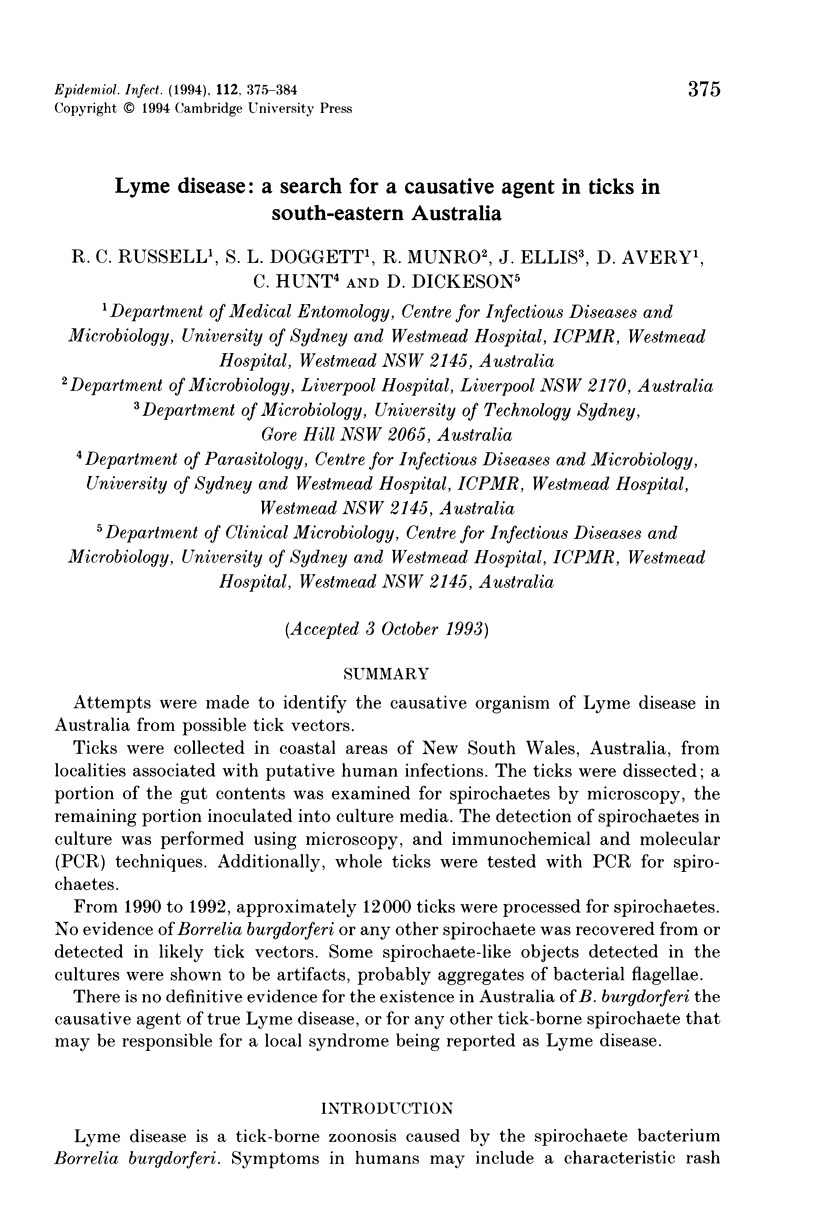
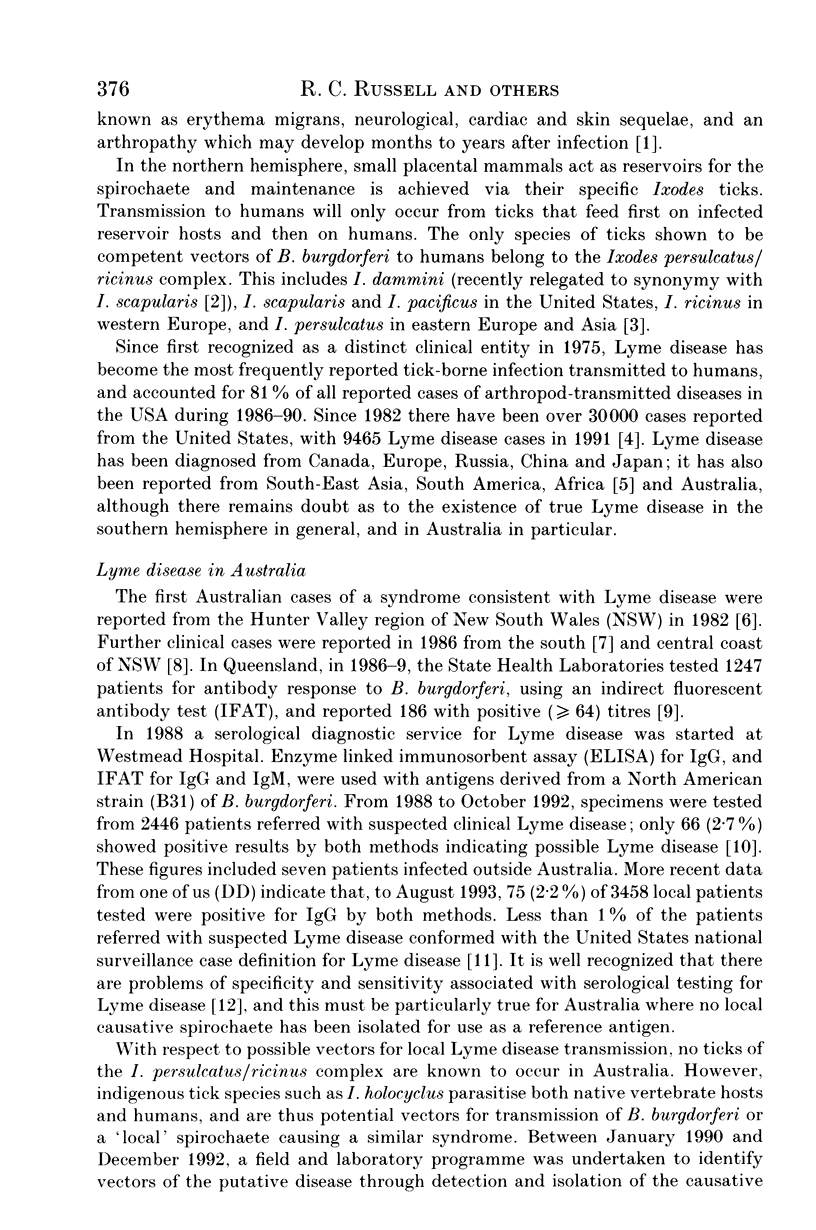
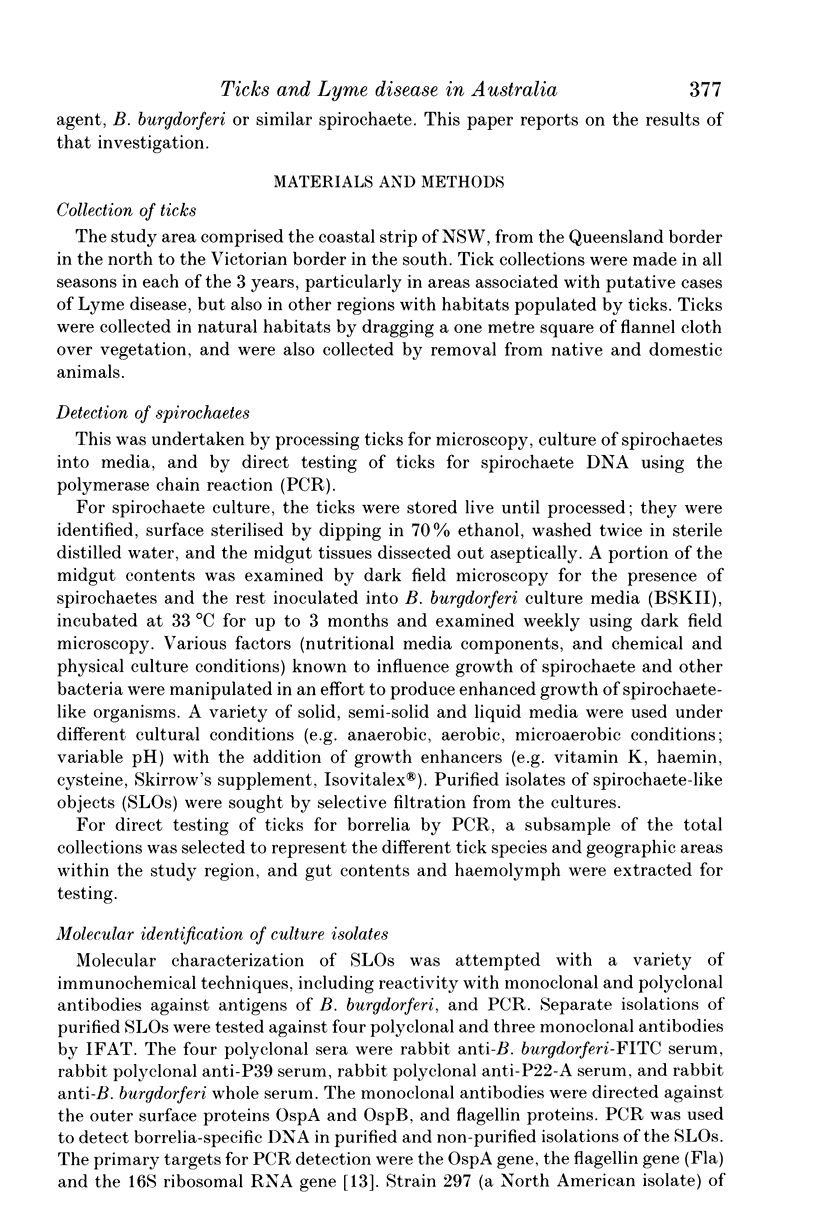
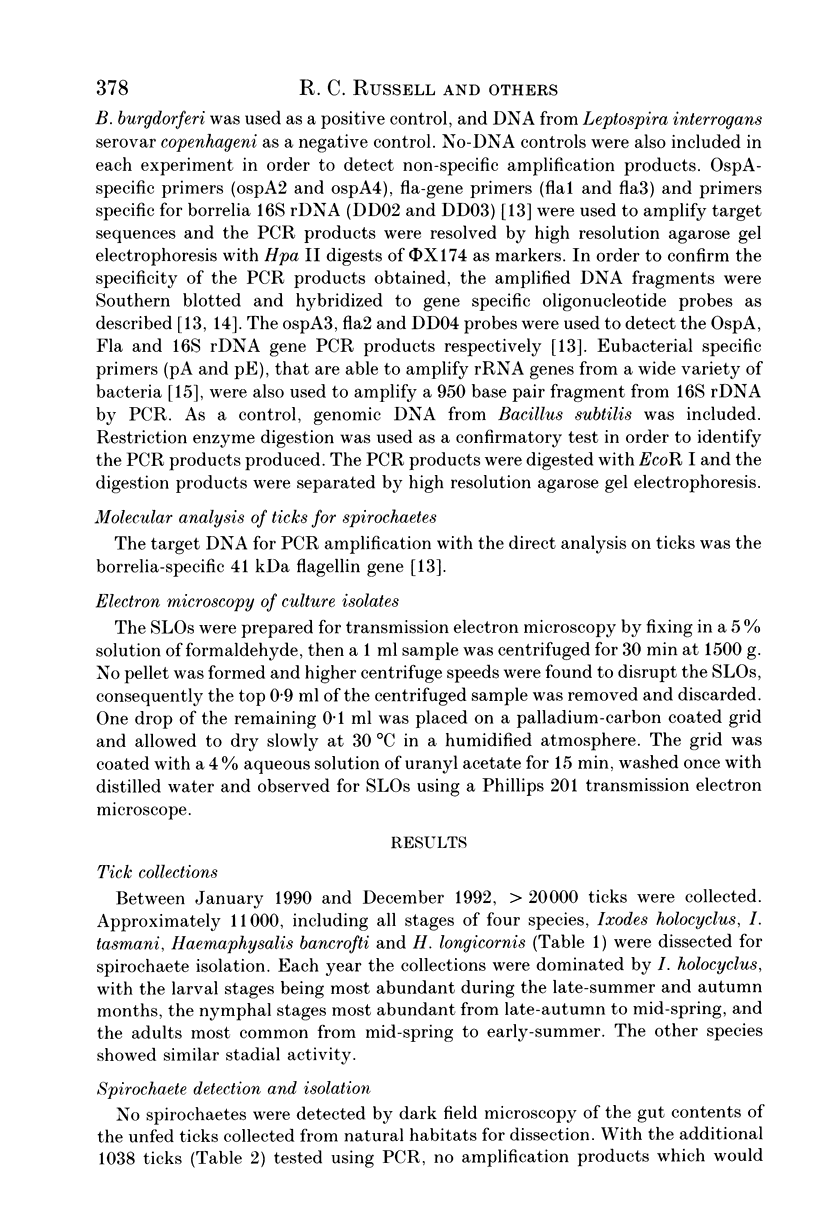
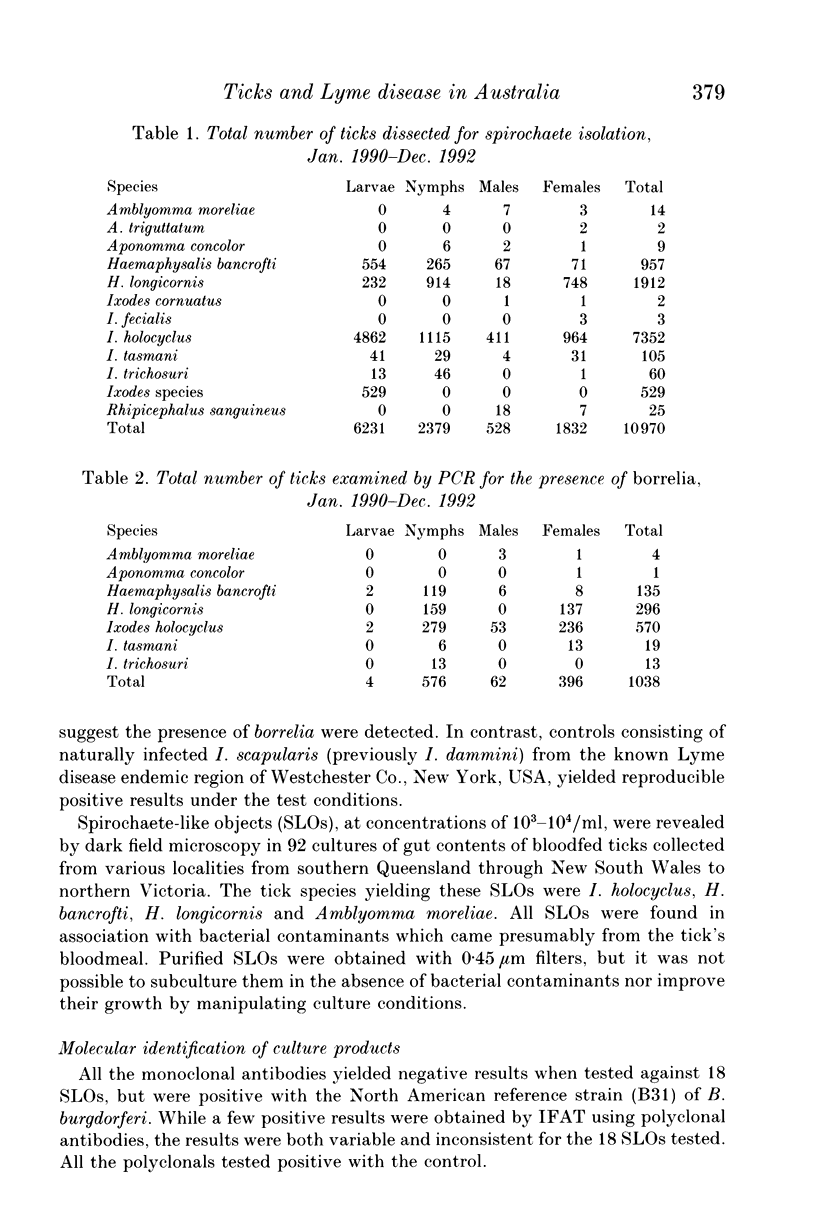
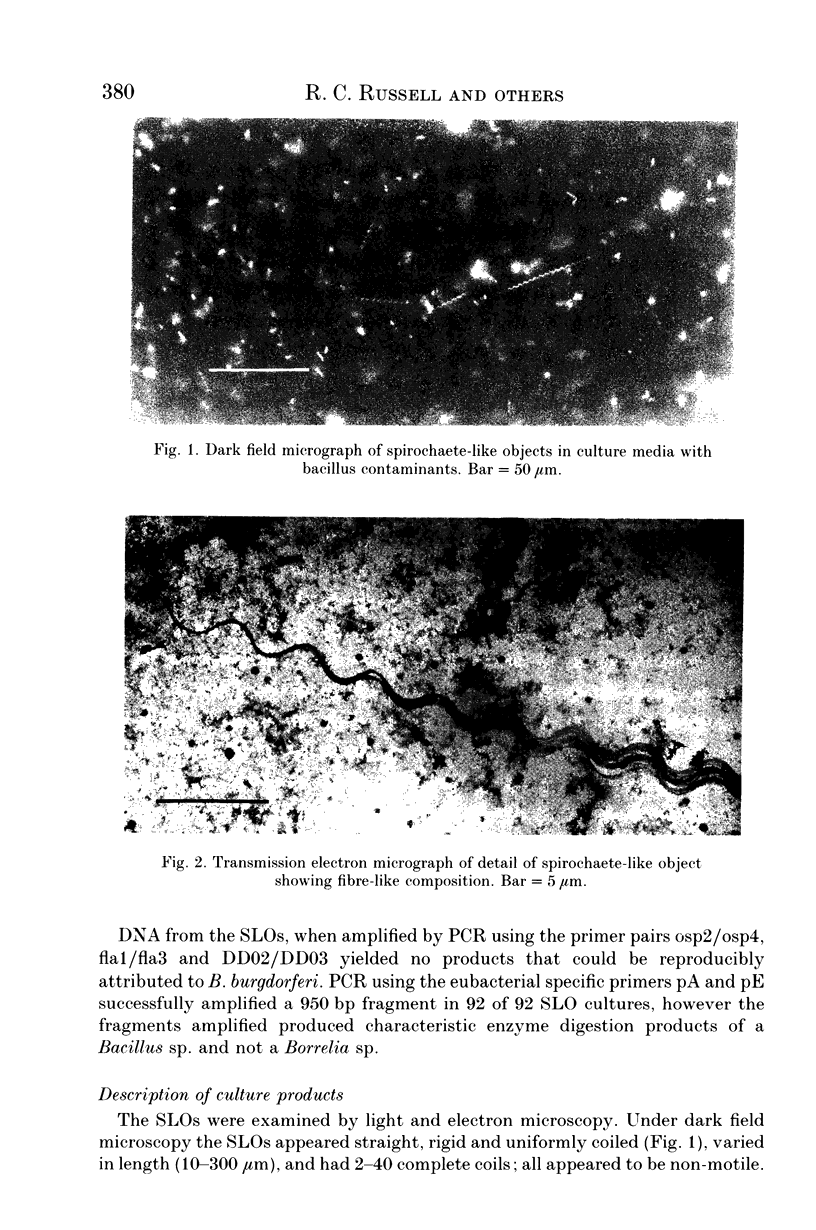

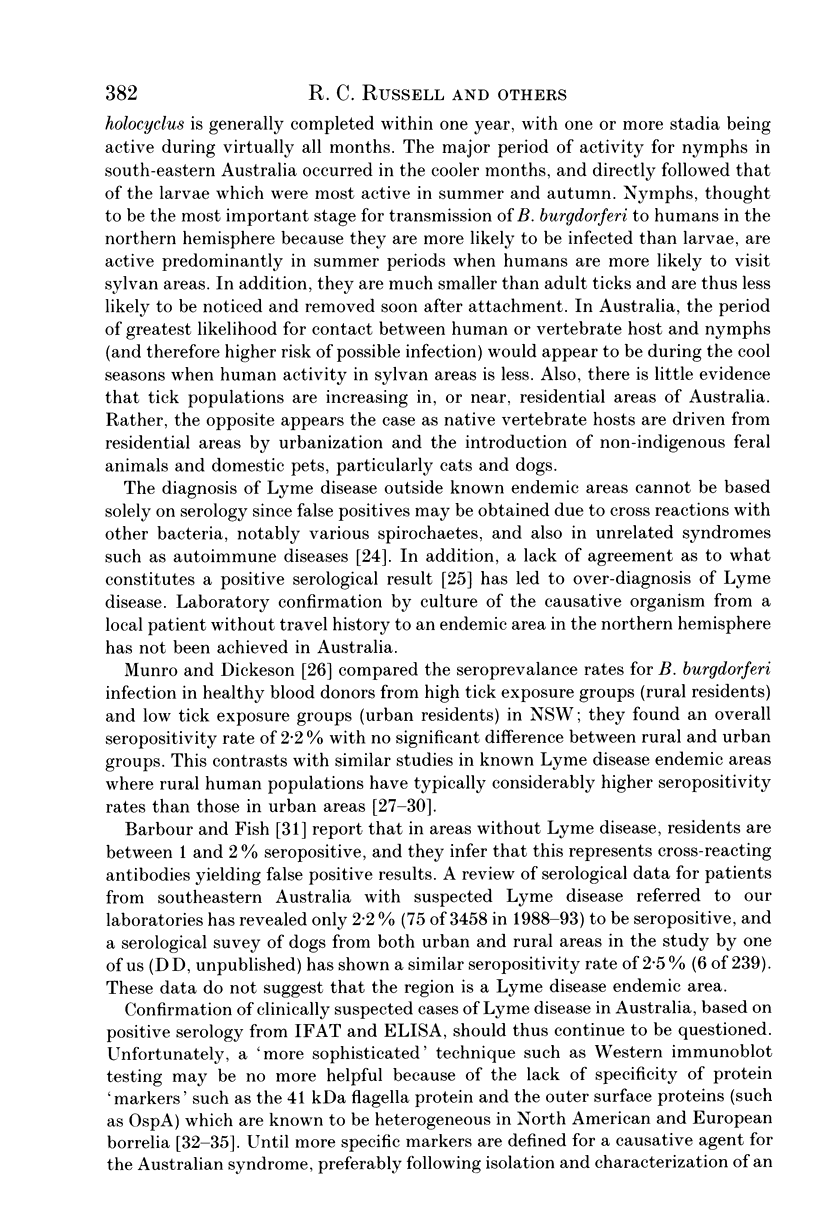
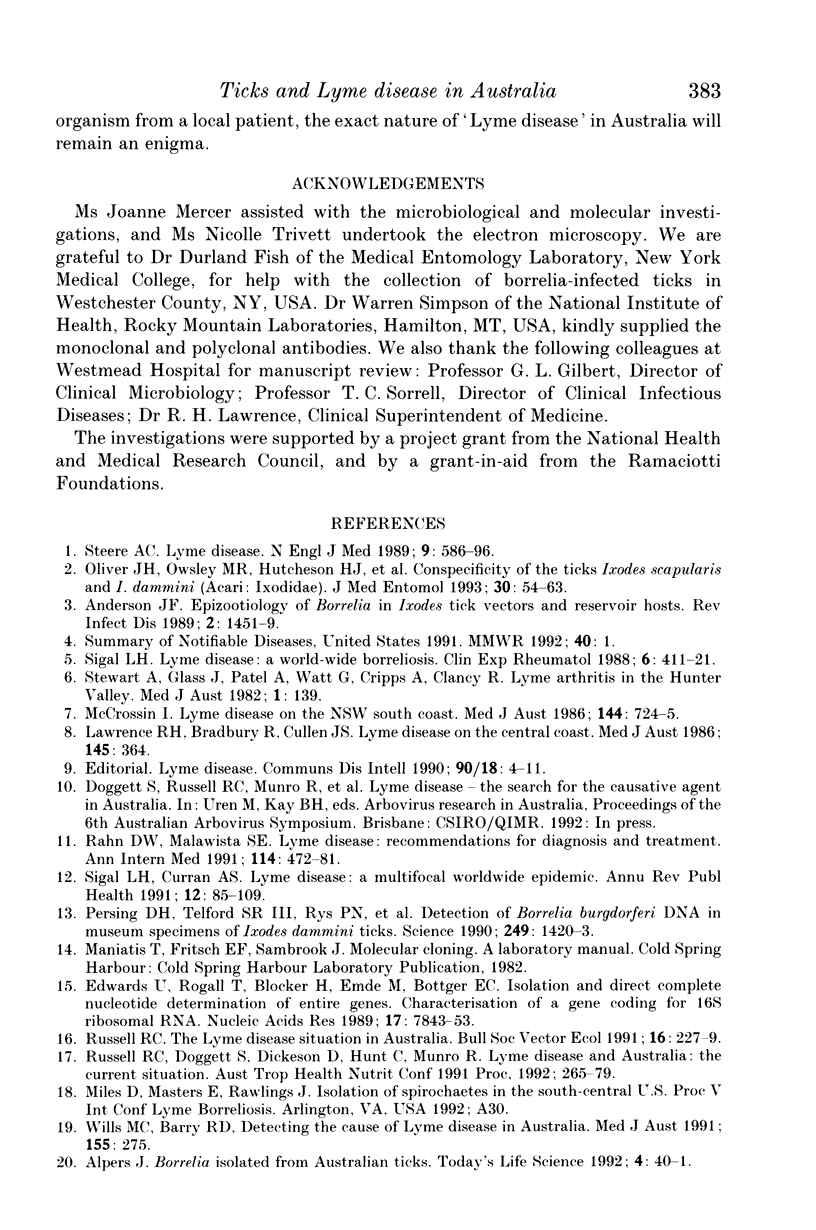
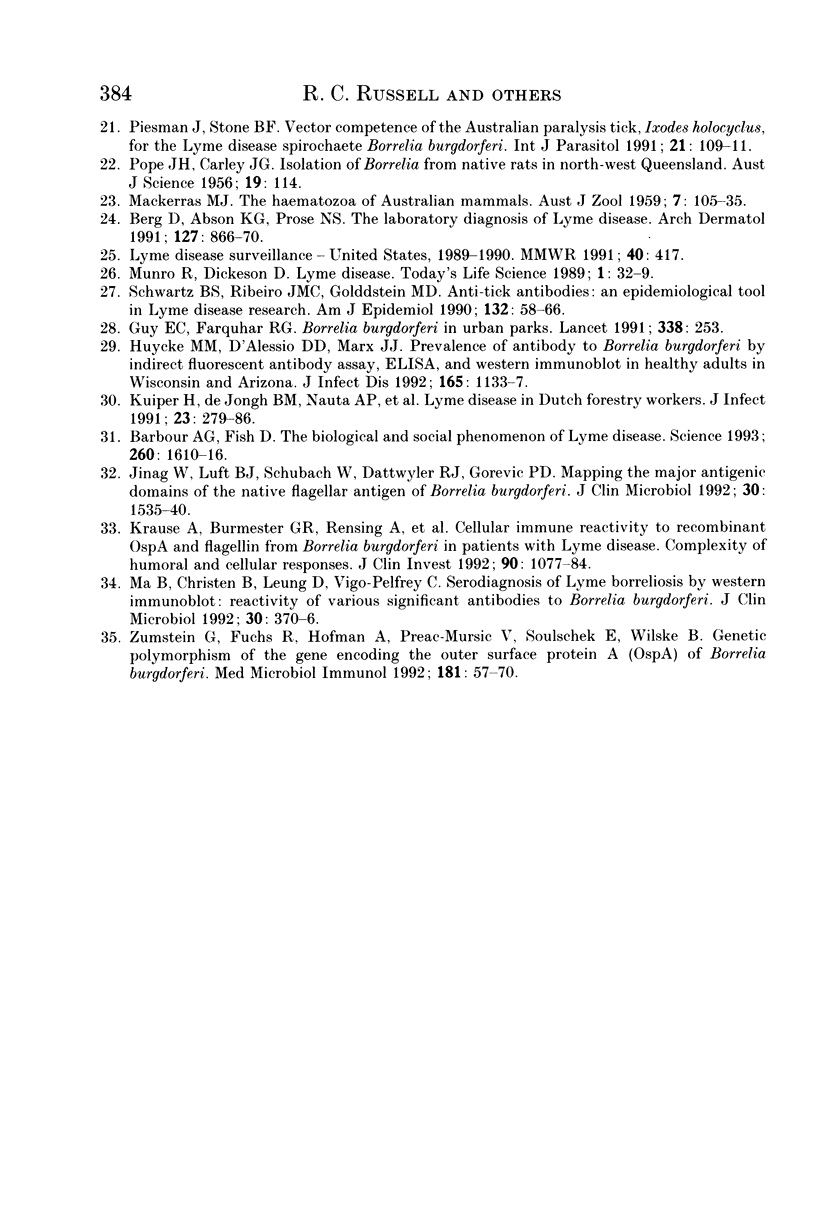
Images in this article
Selected References
These references are in PubMed. This may not be the complete list of references from this article.
- Barbour A. G., Fish D. The biological and social phenomenon of Lyme disease. Science. 1993 Jun 11;260(5114):1610–1616. doi: 10.1126/science.8503006. [DOI] [PubMed] [Google Scholar]
- Berg D., Abson K. G., Prose N. S. The laboratory diagnosis of Lyme disease. Arch Dermatol. 1991 Jun;127(6):866–870. [PubMed] [Google Scholar]
- Edwards U., Rogall T., Blöcker H., Emde M., Böttger E. C. Isolation and direct complete nucleotide determination of entire genes. Characterization of a gene coding for 16S ribosomal RNA. Nucleic Acids Res. 1989 Oct 11;17(19):7843–7853. doi: 10.1093/nar/17.19.7843. [DOI] [PMC free article] [PubMed] [Google Scholar]
- Guy E. C., Farquhar R. G. Borrelia burgdorferi in urban parks. Lancet. 1991 Jul 27;338(8761):253–253. doi: 10.1016/0140-6736(91)90392-3. [DOI] [PubMed] [Google Scholar]
- Huycke M. M., D'Alessio D. D., Marx J. J. Prevalence of antibody to Borrelia burgdorferi by indirect fluorescent antibody assay, ELISA, and western immunoblot in healthy adults in Wisconsin and Arizona. J Infect Dis. 1992 Jun;165(6):1133–1137. doi: 10.1093/infdis/165.6.1133. [DOI] [PubMed] [Google Scholar]
- Jiang W., Luft B. J., Schubach W., Dattwyler R. J., Gorevic P. D. Mapping the major antigenic domains of the native flagellar antigen of Borrelia burgdorferi. J Clin Microbiol. 1992 Jun;30(6):1535–1540. doi: 10.1128/jcm.30.6.1535-1540.1992. [DOI] [PMC free article] [PubMed] [Google Scholar]
- Krause A., Burmester G. R., Rensing A., Schoerner C., Schaible U. E., Simon M. M., Herzer P., Kramer M. D., Wallich R. Cellular immune reactivity to recombinant OspA and flagellin from Borrelia burgdorferi in patients with Lyme borreliosis. Complexity of humoral and cellular immune responses. J Clin Invest. 1992 Sep;90(3):1077–1084. doi: 10.1172/JCI115923. [DOI] [PMC free article] [PubMed] [Google Scholar]
- Kuiper H., de Jongh B. M., Nauta A. P., Houweling H., Wiessing L. G., van Charante A. W., Spanjaard L. Lyme borreliosis in Dutch forestry workers. J Infect. 1991 Nov;23(3):279–286. doi: 10.1016/0163-4453(91)92936-y. [DOI] [PubMed] [Google Scholar]
- Lawrence R. H., Bradbury R., Cullen J. S. Lyme disease on the NSW central coast. Med J Aust. 1986 Oct 6;145(7):364–364. doi: 10.5694/j.1326-5377.1986.tb113860.x. [DOI] [PubMed] [Google Scholar]
- Ma B., Christen B., Leung D., Vigo-Pelfrey C. Serodiagnosis of Lyme borreliosis by western immunoblot: reactivity of various significant antibodies against Borrelia burgdorferi. J Clin Microbiol. 1992 Feb;30(2):370–376. doi: 10.1128/jcm.30.2.370-376.1992. [DOI] [PMC free article] [PubMed] [Google Scholar]
- McCrossin I. Lyme disease on the NSW south coast. Med J Aust. 1986 Jun 23;144(13):724–725. doi: 10.5694/j.1326-5377.1986.tb113715.x. [DOI] [PubMed] [Google Scholar]
- Oliver J. H., Jr, Owsley M. R., Hutcheson H. J., James A. M., Chen C., Irby W. S., Dotson E. M., McLain D. K. Conspecificity of the ticks Ixodes scapularis and I. dammini (Acari: Ixodidae). J Med Entomol. 1993 Jan;30(1):54–63. doi: 10.1093/jmedent/30.1.54. [DOI] [PubMed] [Google Scholar]
- Persing D. H., Telford S. R., 3rd, Rys P. N., Dodge D. E., White T. J., Malawista S. E., Spielman A. Detection of Borrelia burgdorferi DNA in museum specimens of Ixodes dammini ticks. Science. 1990 Sep 21;249(4975):1420–1423. doi: 10.1126/science.2402635. [DOI] [PubMed] [Google Scholar]
- Piesman J., Stone B. F. Vector competence of the Australian paralysis tick, Ixodes holocyclus, for the Lyme disease spirochete Borrelia burgdorferi. Int J Parasitol. 1991 Feb;21(1):109–111. doi: 10.1016/0020-7519(91)90127-s. [DOI] [PubMed] [Google Scholar]
- Rahn D. W., Malawista S. E. Lyme disease: recommendations for diagnosis and treatment. Ann Intern Med. 1991 Mar 15;114(6):472–481. doi: 10.7326/0003-4819-114-6-472. [DOI] [PubMed] [Google Scholar]
- Schwartz B. S., Ribeiro J. M., Goldstein M. D. Anti-tick antibodies: an epidemiologic tool in Lyme disease research. Am J Epidemiol. 1990 Jul;132(1):58–66. doi: 10.1093/oxfordjournals.aje.a115643. [DOI] [PubMed] [Google Scholar]
- Sigal L. H., Curran A. S. Lyme disease: a multifocal worldwide epidemic. Annu Rev Public Health. 1991;12:85–109. doi: 10.1146/annurev.pu.12.050191.000505. [DOI] [PubMed] [Google Scholar]
- Sigal L. H. Lyme disease: a world-wide borreliosis. Clin Exp Rheumatol. 1988 Oct-Dec;6(4):411–421. [PubMed] [Google Scholar]
- Steere A. C. Lyme disease. N Engl J Med. 1989 Aug 31;321(9):586–596. doi: 10.1056/NEJM198908313210906. [DOI] [PubMed] [Google Scholar]
- Stewart A., Glass J., Patel A., Watt G., Cripps A., Clancy R. Lyme arthritis in the Hunter Valley. Med J Aust. 1982 Feb 6;1(3):139–139. doi: 10.5694/j.1326-5377.1982.tb132207.x. [DOI] [PubMed] [Google Scholar]
- Wills M. C., Barry R. D. Detecting the cause of Lyme disease in Australia. Med J Aust. 1991 Aug 19;155(4):275–275. doi: 10.5694/j.1326-5377.1991.tb142253.x. [DOI] [PubMed] [Google Scholar]
- Zumstein G., Fuchs R., Hofmann A., Preac-Mursic V., Soutschek E., Wilske B. Genetic polymorphism of the gene encoding the outer surface protein A (OspA) of Borrelia burgdorferi. Med Microbiol Immunol. 1992;181(2):57–70. doi: 10.1007/BF00189424. [DOI] [PubMed] [Google Scholar]




